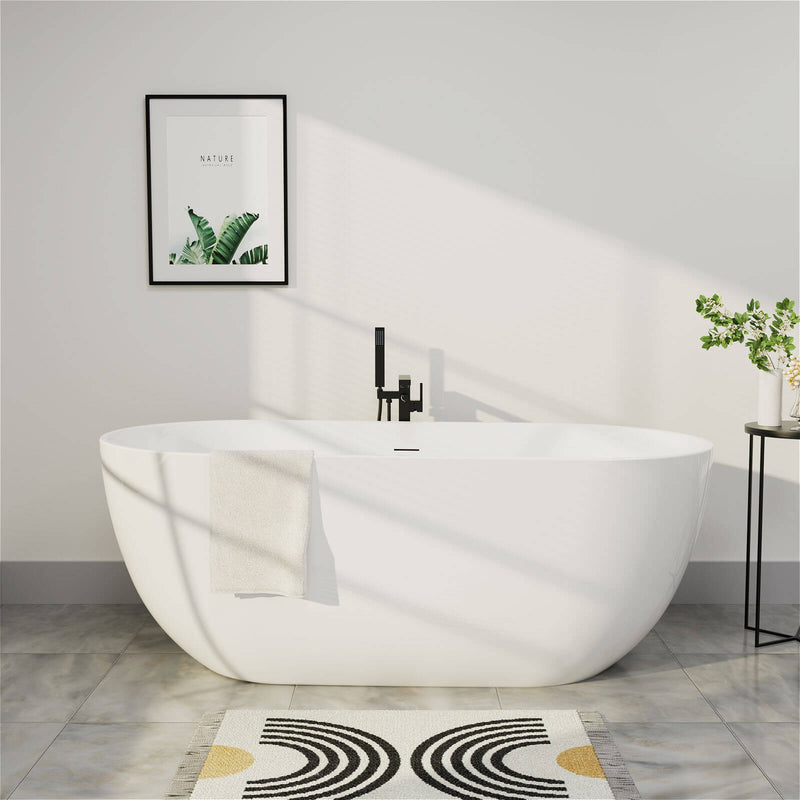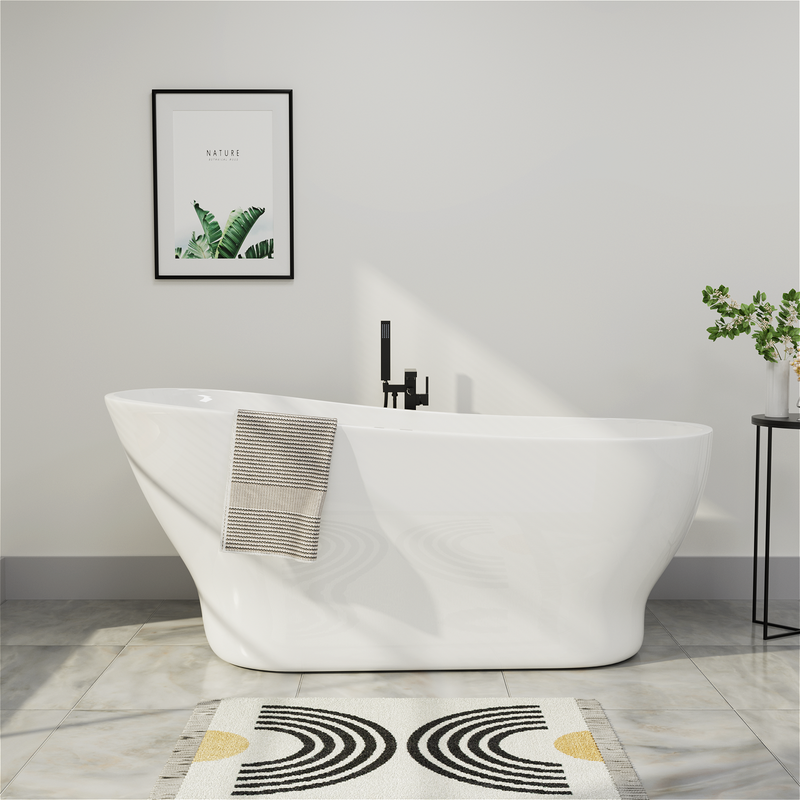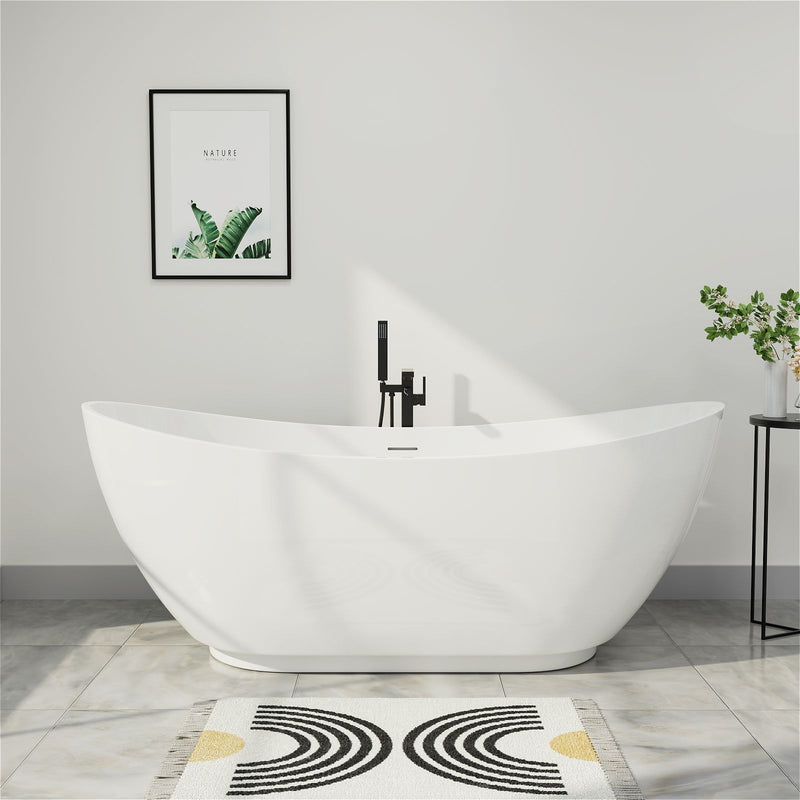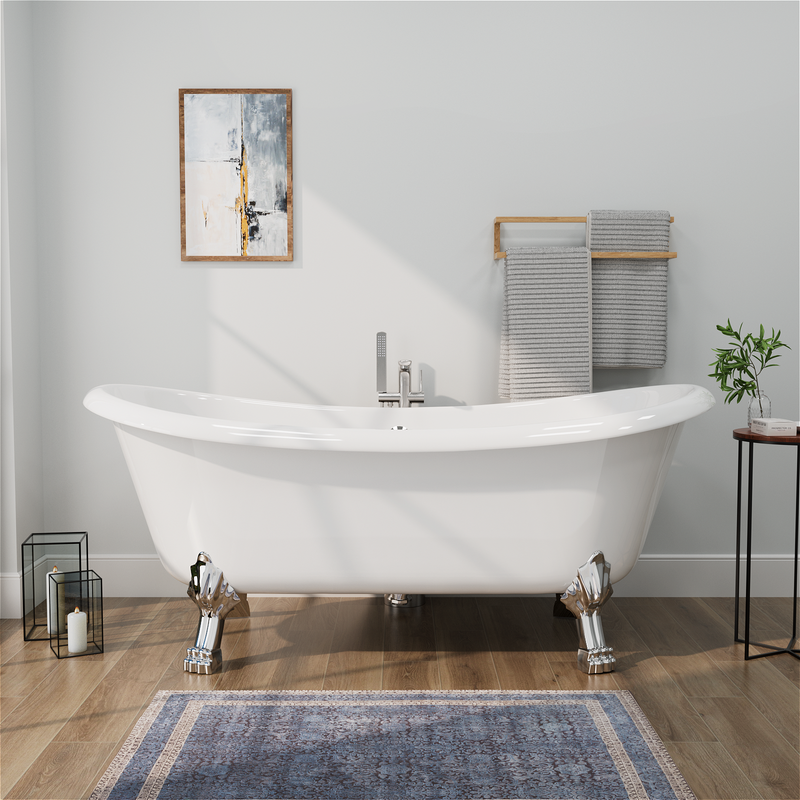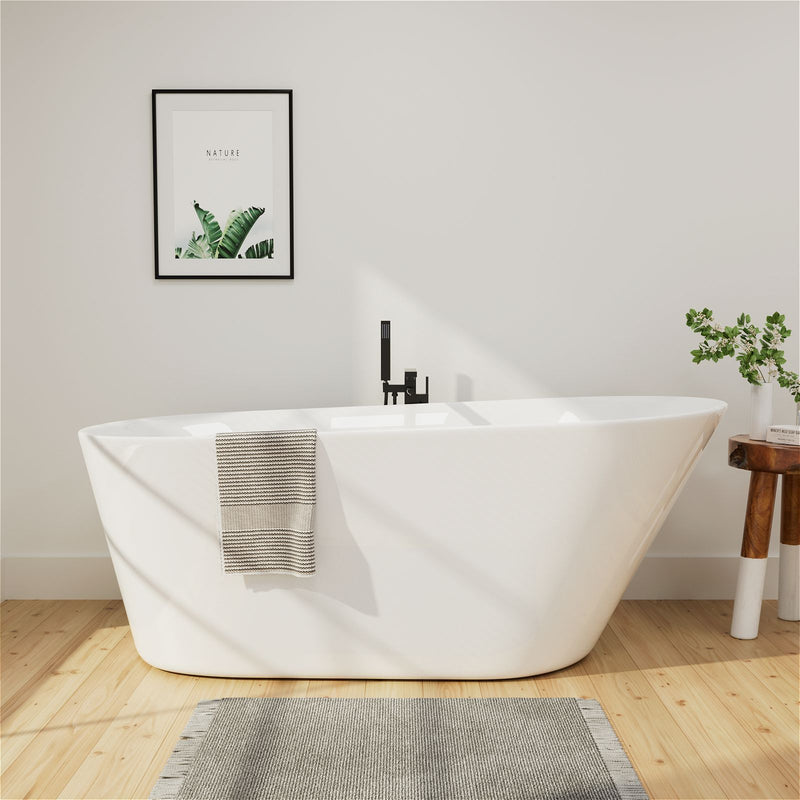The glazed surface of a bathtub represents one of the most important yet frequently overlooked aspects of bathroom maintenance. This protective coating serves as both a aesthetic layer that gives your tub its characteristic shine and a practical barrier that prevents water damage, staining, and bacterial growth. Whether your tub is made of porcelain-enameled steel, cast iron, or modern composite materials, the glaze requires proper care to maintain its functionality and appearance. Unfortunately, many homeowners neglect this crucial maintenance until visible damage appears—by which time repairs become significantly more complicated and expensive.
Understanding proper glaze maintenance techniques can extend the life of your bathtub by decades while preserving its like-new appearance. The following comprehensive guide will take you through everything from basic cleaning protocols to advanced restoration techniques. You'll learn how to identify early warning signs of glaze deterioration, implement effective preventive measures, and address damage at various stages of severity. With proper knowledge and regular care, you can avoid costly bathtub replacements and keep your bathing area looking pristine for years to come.

Understanding Bathtub Glaze Composition and Vulnerability
The Science Behind Tub Glazing
Bathtub glaze is essentially a specially formulated glass coating that is fused to the underlying material at extremely high temperatures. This vitreous coating creates a non-porous surface that resists water absorption, prevents staining, and provides a smooth, easy-to-clean finish. The composition varies depending on the base material—porcelain enamel on steel has different properties from ceramic glazes on cast iron or acrylic coatings on fiberglass tubs. Despite their differences, all glazes share similar vulnerabilities to abrasion, chemical attack, and impact damage.
The thickness of this glaze layer typically ranges from 0.003 to 0.007 inches, making it surprisingly thin and delicate relative to its importance. This thinness means that even minor scratches can potentially compromise its protective qualities if they penetrate through to the substrate below. Understanding this fragility is key to implementing proper maintenance techniques that preserve rather than damage this crucial protective layer.
Common Causes of Glaze Deterioration
Multiple factors contribute to the gradual degradation of bathtub glazing. Abrasive cleaning tools rank among the most common culprits—steel wool, harsh scrubbing pads, and even rough-textured sponges can create microscopic scratches that accumulate over time. These tiny imperfections gradually dull the surface and provide entry points for moisture and contaminants.
Chemical damage represents another significant threat. Highly alkaline or acidic cleaners can etch the glaze surface, particularly if left in contact for extended periods. Even some commercial bathroom cleaners marketed as effective can be too aggressive for regular use on glazed surfaces. Physical impact from dropped objects, particularly metal or ceramic items, can cause chips and cracks that compromise the glaze's integrity. Additionally, thermal stress from alternating hot and cold temperatures can cause micro-fractures in the glaze over time, especially in older tubs.
Daily and Weekly Maintenance Protocols
Proper Cleaning Techniques and Frequency
Establishing a regular cleaning routine represents the single most effective strategy for preserving bathtub glaze. For daily maintenance, simply rinsing the tub with warm water after each use prevents soap residue and mineral deposits from building up. This thirty-second habit can significantly reduce the need for aggressive cleaning later.
Weekly cleaning should involve a mild, pH-neutral cleaner specifically formulated for glazed surfaces. Apply the cleaner with a soft sponge or microfiber cloth using circular motions. Avoid excessive pressure—let the cleaning solution do the work rather than scrubbing aggressively. For stubborn soap scum, allow the cleaner to sit for several minutes before wiping. Always rinse thoroughly with clean water after cleaning to remove any residue that might attract dirt or cause hazing.
Product Selection and Homemade Alternatives
Choosing the right cleaning products is essential for glaze preservation. Look for cleaners specifically labeled as safe for glazed surfaces, avoiding those containing abrasive particles, hydrochloric acid, or ammonia-based formulas. Many manufacturers now offer environmentally friendly options that effectively clean without damaging surfaces.
For those preferring homemade solutions, a paste made from baking soda and water provides gentle abrasion for removing stains without damaging glaze. A vinegar-water solution (one part vinegar to four parts water) can address mineral deposits, but should be used sparingly and rinsed immediately as the acidity can eventually affect some glazes. Regardless of the product used, always test it on a small, inconspicuous area first to ensure compatibility with your particular tub finish.
Addressing Minor Damage and Early Wear

Identifying Early-Stage Glaze Problems
Catching glaze issues early makes them significantly easier to address. The first signs of trouble typically include a gradual loss of shine, increased difficulty cleaning, and a rough texture where the surface once felt smooth. Cloudy appearing areas often indicate microscopic scratching or chemical etching that hasn't yet progressed to visible damage.
More advanced but still addressable issues include minor staining that doesn't respond to normal cleaning, slight discoloration in high-use areas, and the beginnings of what appears to be "orange peel" texture in the glaze. At this stage, professional intervention might not yet be necessary, but more targeted maintenance approaches are required.
DIY Solutions for Surface Imperfections
For minor glaze issues, several effective approaches can restore appearance without professional help. Glaze renewal kits, available at most home improvement stores, can temporarily restore shine and fill minor scratches. These typically involve applying a specialized compound that bonds with the existing glaze to create a smoother surface.
For light scratches, automotive polishing compounds designed for clear coat finishes can sometimes be effective when applied with a soft cloth using minimal pressure. Always test these products on an inconspicuous area first. For mineral deposits and hard water stains, a commercial lime and scale remover specifically formulated for glazed surfaces can be effective when used according to directions.
Professional Restoration Options
When to Seek Professional Help
Certain conditions indicate that professional intervention is necessary. If the glaze shows visible cracks, extensive chipping, or areas where the underlying material is exposed, DIY approaches will likely prove insufficient. Similarly, if the surface has become rough over large areas or shows significant discoloration that doesn't respond to cleaning, professional refinishing may represent the most cost-effective solution.
Professional assessment is also recommended if the tub bottom shows significant wear patterns or if multiple fixtures in the same bathroom show similar deterioration, which might indicate water quality issues contributing to the problem. In cases where the tub is historically significant or particularly valuable, professional consultation is always recommended before attempting any restoration.
The Professional Reglazing Process
Professional bathtub reglazing typically involves several meticulous steps. The process begins with thorough cleaning and etching of the existing surface to ensure proper adhesion of new coatings. Any chips or cracks are repaired with specialized fillers, and the entire surface is carefully sanded to create uniform texture.
The technician then applies a primer specifically formulated for bathroom surfaces, followed by multiple thin coats of acrylic urethane or epoxy finish. Each layer is applied using specialized spray equipment under controlled temperature and humidity conditions. The final result is a new surface that closely replicates the original factory finish in both appearance and durability. When performed by qualified technicians, this process can extend a tub's life by ten to fifteen years at a fraction of replacement cost.
Preventive Strategies and Long-Term Preservation
Environmental Controls and Usage Habits
Long-term glaze preservation involves modifying both environment and habits. Using a bathroom exhaust fan during and after bathing reduces humidity that can contribute to glaze deterioration over time. Keeping bathroom temperatures relatively consistent also helps prevent thermal stress on the glaze.
Installing a water softener if you have hard water can significantly reduce mineral deposit formation and abrasive cleaning needs. Placing non-slip mats rather than adhesive decals protects the glaze from damage, and using rubber-backed rather than suction cup mats prevents moisture trapping that can affect some glaze types.
Regular Maintenance Schedule for Optimal Preservation
Implementing a structured maintenance schedule provides the best protection for your tub's glaze. Daily rinsing should be complemented by weekly gentle cleaning with appropriate products. Monthly inspections for early signs of wear allow for prompt addressing of minor issues before they become major problems.
Every six months, a more thorough cleaning and inspection should be performed, including checking the caulking around the tub—deteriorated caulk can allow water behind the tub and cause damage not immediately visible. Annual professional cleaning or inspection can identify potential issues early, particularly for older tubs or those in rental properties with higher usage patterns.
Troubleshooting Common Glaze Problems
Addressing Specific Types of Damage
Different types of glaze damage require targeted approaches. For mineral deposits from hard water, commercial descaling products formulated for bathroom use typically work best. For soap scum buildup, cleaners containing degreasing agents are most effective. Mold and mildew require cleaners with specific antifungal properties.

Surface scratches can sometimes be minimized using glaze renewal products, while deeper scratches may require professional attention. Chips and cracks nearly always need professional repair to prevent water damage to the underlying material. Discoloration from medication or cosmetic products often requires specialized cleaners to remove without damaging the glaze further.
Myths and Misconceptions About Glaze Care
Several common misconceptions persist regarding bathtub glaze care. Contrary to popular belief, more aggressive cleaning does not yield better results—gentle, consistent cleaning proves far more effective long-term. The notion that glazed surfaces are virtually indestructible leads to practices that actually shorten their lifespan.
Another common myth suggests that all discoloration indicates glaze failure, when often it simply reflects buildup that can be removed with proper techniques. Finally, many homeowners believe reglazing is merely cosmetic, when in fact it serves crucial protective functions that prevent structural damage to the tub itself.
By understanding proper glaze maintenance techniques and implementing regular care, you can preserve both the appearance and functionality of your bathtub for decades. This investment of time and attention pays dividends by avoiding premature replacement costs and maintaining your bathroom's aesthetic appeal.

